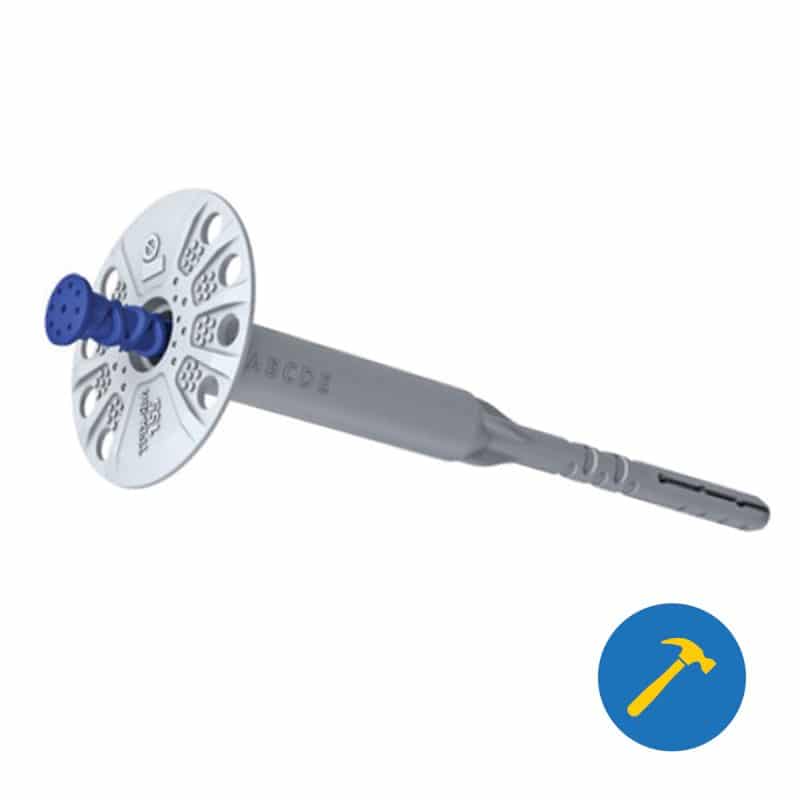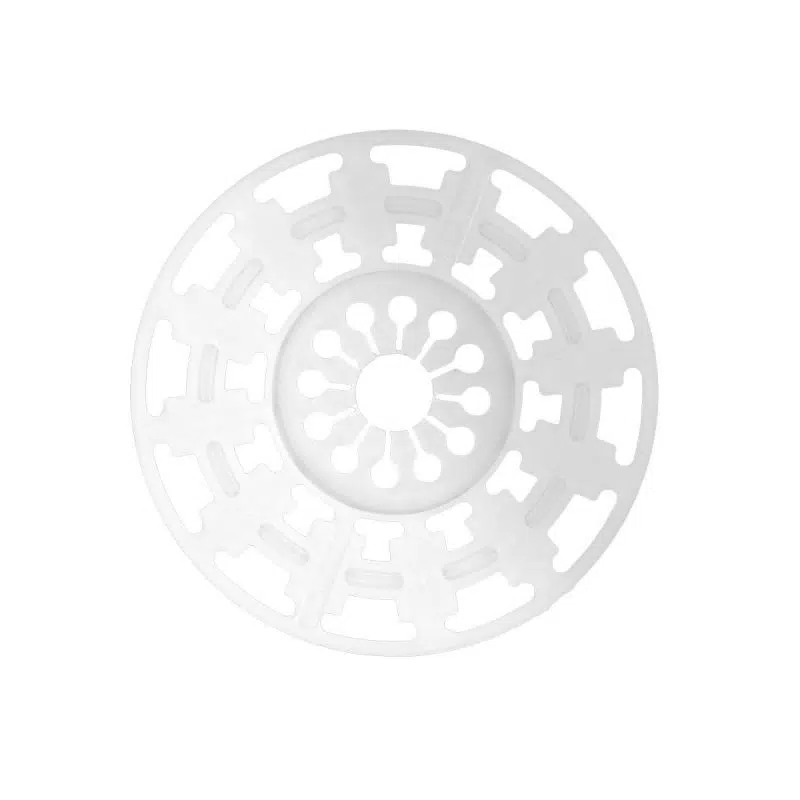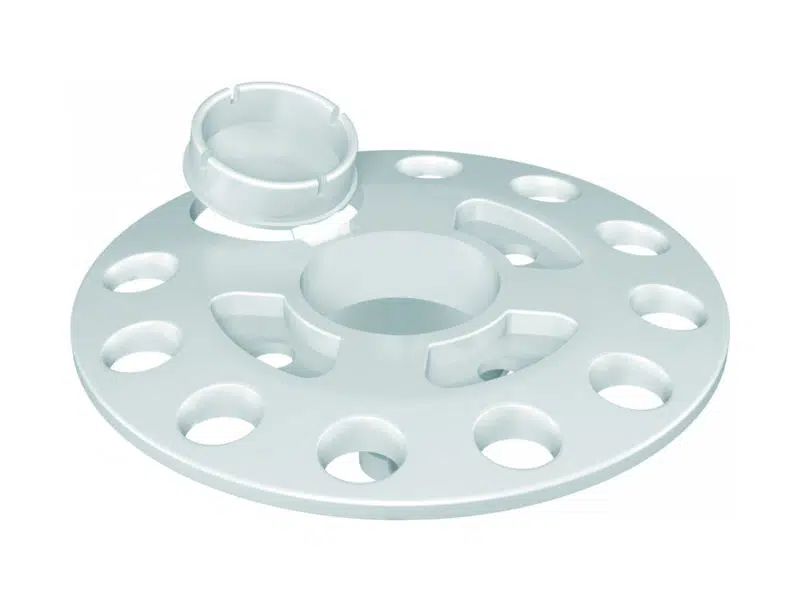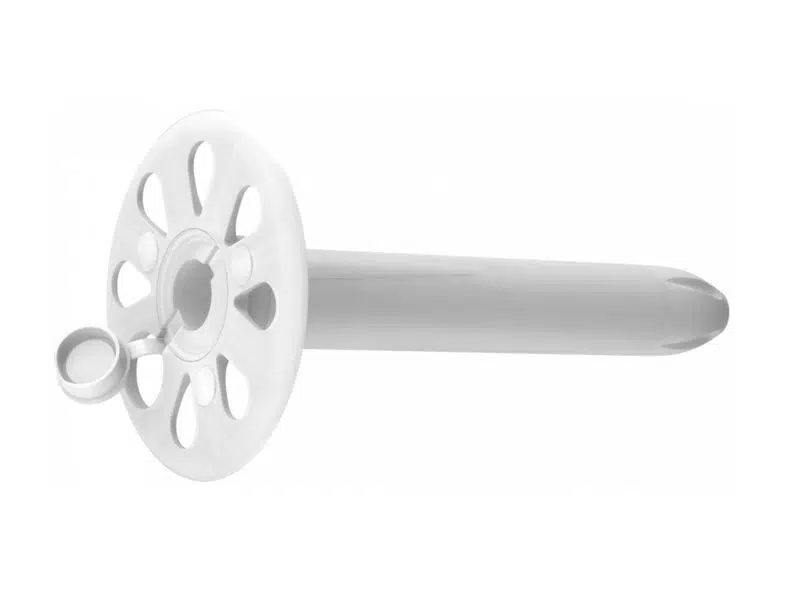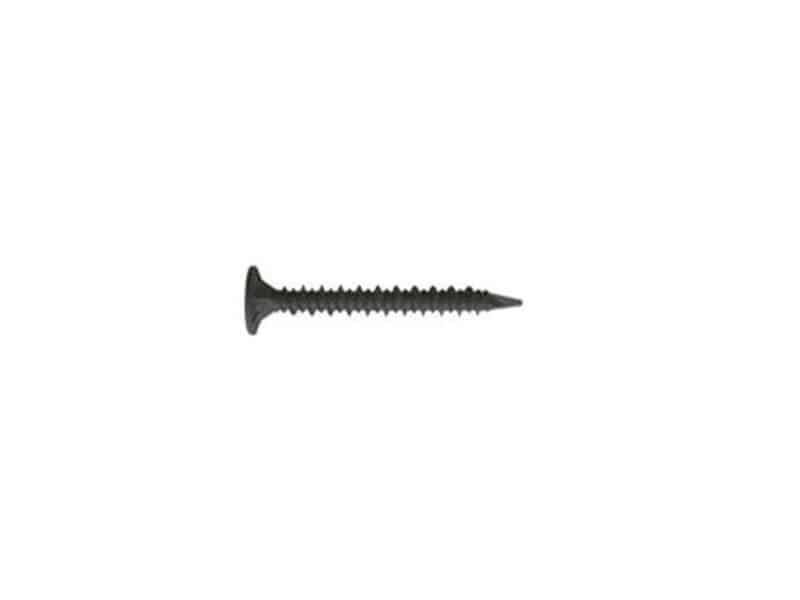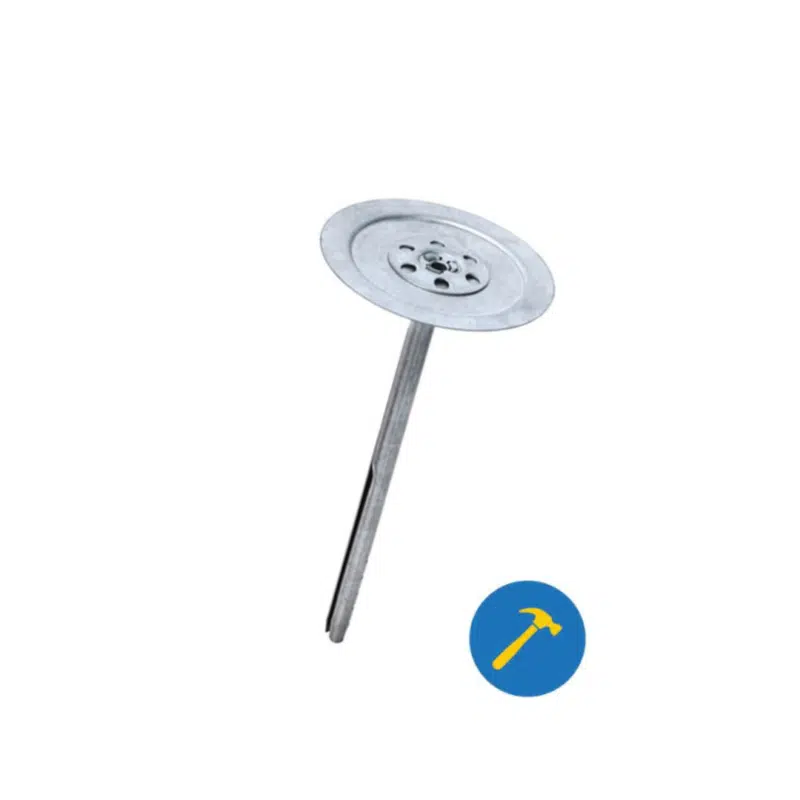What Fixings Do I Need For My Insulation Project?
At EWI Store, we have an extensive selection of screws and fixings. In this blog, we will take a look at the different kind of fixings we have in our store, when they can be used, and how they can suit your varying project’s needs. This way, you can stay informed about which ones are right for you.
What are fixings?
Before we explore our various groups of fixings on offer, it is worth outlining exactly what we mean by the term and what they are in relation to EWI installation.
Fixings is the name given to the overarching category of products that is made up of screws, discs, and washers. When it comes to external wall insulation systems, fixings are a necessary step in securing and holding the overall system firmly in place.
As there are many different types of fixings available on the market for varying purposes, we will outline some of the key groups and purposes throughout this blog.
Why use fixings in EWI installation?
At this point, you might be wondering why exactly you should use fixings as part of your EWI system?
As mentioned, fixings and screws securely hold the system in place. A strong and secure insulation system is necessary for ensuring the system lasts for years to come. Our screws and fixings come in a range of sizes, lengths, and shapes.
Masonry (Brick and Block)
The first fixings we will discuss are used to anchor insulation directly to brick or block substrates. These fixings are always used in solid wall insulation systems as they secure the insulation in place.
There are a few different types of fixing in this group:
- Plastic hammer fixing. These consist of a plastic sheath and a plastic pin. A hole is drilled through the insulation and into the block. The sheath of the fixing is inserted into it and the plastic pin is then hammered into place. These are available in a range of thicknesses depending on the thickness of the insulation system. Typically, we recommend using a fixing at least 40mm longer than the thickness of the insulation. E.g., if you use a 50mm insulation board the mechanical fixing should be at least 90mm.
- We also offer metal hammer fixings. Much like the plastic hammer fixings, these consist of a plastic sheath, but the pin that is hammered in is made of metal. As you would expect, these are much stronger than the plastic hammer option.
- Finally, in this group, we offer Screw fixings. A great example of this type of fixing is the Rawlplug R-TFIX-8S. These also have a plastic sheath, but the pin is screwed in, instead of hammered into place. A key advantage of screwing the pin into place is that there is no impact damage caused to the underlying brick or block.
Fixing Spreader Washers
Another main group of fixings that we offer are ‘fixing spreader washers.’ These are typically used in conjunction with mineral wool insulation.
When using this particular type of fixing, we suggest inserting one of our hammer or screw fixings through the fixing spreader washer. This helps to increase the surface area of the head. In turn, the system is anchored more securely to the wall.
Insulation to Sheathing Board Fixings
Sheathing boards have their own specific set of fixings. In this instance, you will need two key components – a fixing disc and an appropriate screw (depending on the type of sheathing board the insulation is going in to).
Simply insert the screw through the fixing disc, then, insert it through the insulation and screw into the sheathing board. Please note that the screw must be longer than the insulation board you are fixing to the sheathing board!
Our screws are designed for use with different types of sheathing board. For example, the Wkret-Met KMH-60 is used when the insulation is being screwed to a wooden sheathing board. Whereas the Rawlplug R-WX self-drilling screw is perfect for screwing into sheet steel.
The Rawlplug KCX Tubed insulation washer is used much like the fixing discs. However, it allows you to secure very thick insulation to the sheathing board. The KCX tubed washer is pushed into the insulation (105mm long) and then a screw is inserted through the bottom of this. A 100mm screw used in conjunction with the KCX would allow you to anchor 200mm thick insulation!
Render Carrier Board
Another important group worth discussing are render carrier board fixings. These are typically short screws (30 – 50mm), composed of high-quality stainless steel, and are used to attach render carrier boards to battens.
Normally, we recommend using 30 screws per render carrier board (when the carrier board is 2400 x 1200). We stock a selection of render carrier board screws from top manufacturers like Rawlplug, STS, and Evolution.
Please be aware that you will require specific screws depending on the batten material (typically steel or wood). For example, you can use the Evolution WHX for wood, and the Rawlplug – R-WX for steel battens.
Render-only
Another key group worth discussing is render-only. While these are not a necessity, they are useful in helping to anchor render only systems to potentially unstable substrates (e.g., sand and cement render).
While lightweight silicone renders shouldn’t put too much strain when applied to existing sand and cement render, render-only fixings can be used to reinforce the system.
Once the mesh basecoat layer has been applied, these work to tie the mesh to the substrate. This helps the render only system stay in place for years to come.
Fire-break Fixings
Unlike the sheath and pin system, the sheath is hammered into the place, successfully holding the insulation in place. The Rawlplug MBA fixing works well in conjunction with the MKC Steel washer. The surface area of the head of the MBA is increased and anchored more securely.
Insulation Accessories
Finally, we have ‘insulation accessories.’ This category features a range of miscellaneous insulation fixings and accessories that are useful, but do not necessarily fit the above groupings.
For example, you can find fir tree fixings – which are used to tie beading to insulation. We also have the whole Swifix range which allows you to anchor the likes of Sky Dishes directly to brick or block beneath the insulation system. You can also find spiral anchors which can be used to secure lightweight items to EWI systems, as well as screws to attach starter track to walls.
Facebook
Twitter
LinkedIn
Your cart
Trade Account Login

We use cookies on our website to give you the most relevant experience by remembering your preferences and repeat visits. By clicking “Accept All”, you consent to the use of ALL the cookies. However, you may visit "Cookie Settings" to provide personalised consent.
Manage consent
Privacy Overview
This website uses cookies to improve your experience while you navigate through the website. Out of these, the cookies that are categorized as necessary are stored on your browser as they are essential for the working of basic functionalities of the website. We also use third-party cookies that help us analyze and understand how you use this website. These cookies will be stored in your browser only with your consent. You also have the option to opt-out of these cookies. But opting out of some of these cookies may affect your browsing experience.
Necessary cookies are absolutely essential for the website to function properly. These cookies ensure basic functionalities and security features of the website, anonymously.
| Cookie | Duration | Description |
|---|---|---|
| __stripe_mid | 1 year | This cookie is set by Stripe payment gateway. This cookie is used to enable payment on the website without storing any patment information on a server. |
| __stripe_sid | 30 minutes | This cookie is set by Stripe payment gateway. This cookie is used to enable payment on the website without storing any patment information on a server. |
| _GRECAPTCHA | 5 months 27 days | This cookie is set by the Google recaptcha service to identify bots to protect the website against malicious spam attacks. |
| apbct_cookies_test | session | CleanTalk sets this cookie to prevent spam on comments and forms and act as a complete anti-spam solution and firewall for the site. |
| apbct_page_hits | session | CleanTalk sets this cookie to prevent spam on comments and forms and act as a complete anti-spam solution and firewall for the site. |
| apbct_prev_referer | session | Functional cookie placed by CleanTalk Spam Protect to store referring IDs and prevent unauthorized spam from being sent from the website. |
| apbct_site_landing_ts | session | CleanTalk sets this cookie to prevent spam on comments and forms and act as a complete anti-spam solution and firewall for the site. |
| apbct_site_referer | 3 days | This cookie is placed by CleanTalk Spam Protect to prevent spam and to store the referrer page address which led the user to the website. |
| apbct_timestamp | session | CleanTalk sets this cookie to prevent spam on comments and forms and act as a complete anti-spam solution and firewall for the site. |
| apbct_urls | 3 days | This cookie is placed by CleanTalk Spam Protect to prevent spam and to store the addresses (urls) visited on the website. |
| AWSALBCORS | 7 days | This cookie is managed by Amazon Web Services and is used for load balancing. |
| cookielawinfo-checkbox-advertisement | 1 year | Set by the GDPR Cookie Consent plugin, this cookie is used to record the user consent for the cookies in the "Advertisement" category . |
| cookielawinfo-checkbox-analytics | 11 months | This cookie is set by GDPR Cookie Consent plugin. The cookie is used to store the user consent for the cookies in the category "Analytics". |
| cookielawinfo-checkbox-functional | 11 months | The cookie is set by GDPR cookie consent to record the user consent for the cookies in the category "Functional". |
| cookielawinfo-checkbox-necessary | 11 months | This cookie is set by GDPR Cookie Consent plugin. The cookies is used to store the user consent for the cookies in the category "Necessary". |
| cookielawinfo-checkbox-others | 11 months | This cookie is set by GDPR Cookie Consent plugin. The cookie is used to store the user consent for the cookies in the category "Other. |
| cookielawinfo-checkbox-performance | 11 months | This cookie is set by GDPR Cookie Consent plugin. The cookie is used to store the user consent for the cookies in the category "Performance". |
| ct_checkjs | session | CleanTalk–Used to prevent spam on our comments and forms and acts as a complete anti-spam solution and firewall for this site. |
| ct_fkp_timestamp | session | CleanTalk sets this cookie to prevent spam on the site's comments/forms, and to act as a complete anti-spam solution and firewall for the site. |
| ct_pointer_data | session | CleanTalk sets this cookie to prevent spam on the site's comments/forms, and to act as a complete anti-spam solution and firewall for the site. |
| ct_ps_timestamp | session | CleanTalk sets this cookie to prevent spam on the site's comments/forms, and to act as a complete anti-spam solution and firewall for the site. |
| ct_sfw_pass_key | 1 month | CleanTalk sets this cookie to prevent spam on comments and forms and act as a complete anti-spam solution and firewall for the site. |
| ct_timezone | session | CleanTalk–Used to prevent spam on our comments and forms and acts as a complete anti-spam solution and firewall for this site. |
| elementor | never | This cookie is used by the website's WordPress theme. It allows the website owner to implement or change the website's content in real-time. |
| viewed_cookie_policy | 11 months | The cookie is set by the GDPR Cookie Consent plugin and is used to store whether or not user has consented to the use of cookies. It does not store any personal data. |
Functional cookies help to perform certain functionalities like sharing the content of the website on social media platforms, collect feedbacks, and other third-party features.
| Cookie | Duration | Description |
|---|---|---|
| __zlcmid | 1 year | This cookie is used by Zendesk live chat and is used to store the live chat ID. |
| bcookie | 2 years | LinkedIn sets this cookie from LinkedIn share buttons and ad tags to recognize browser ID. |
| bscookie | 2 years | LinkedIn sets this cookie to store performed actions on the website. |
| lang | session | LinkedIn sets this cookie to remember a user's language setting. |
| lidc | 1 day | LinkedIn sets the lidc cookie to facilitate data center selection. |
| UserMatchHistory | 1 month | LinkedIn sets this cookie for LinkedIn Ads ID syncing. |
Performance cookies are used to understand and analyze the key performance indexes of the website which helps in delivering a better user experience for the visitors.
| Cookie | Duration | Description |
|---|---|---|
| __utma | 2 years | This cookie is set by Google Analytics and is used to distinguish users and sessions. The cookie is created when the JavaScript library executes and there are no existing __utma cookies. The cookie is updated every time data is sent to Google Analytics. |
| __utmb | 30 minutes | Google Analytics sets this cookie, to determine new sessions/visits. __utmb cookie is created when the JavaScript library executes and there are no existing __utma cookies. It is updated every time data is sent to Google Analytics. |
| __utmc | session | The cookie is set by Google Analytics and is deleted when the user closes the browser. It is used to enable interoperability with urchin.js, which is an older version of Google Analytics and is used in conjunction with the __utmb cookie to determine new sessions/visits. |
| __utmt | 10 minutes | Google Analytics sets this cookie to inhibit request rate. |
| __utmv | 2 years | The __utmv cookie is set on the user's device, to enable Google Analytics to classify the visitor. |
| __utmz | 6 months | Google Analytics sets this cookie to store the traffic source or campaign by which the visitor reached the site. |
| sib_cuid | 6 months | Purechat uses this cookie to send data to purechat.com, to connect visitors to the reservation team and track visitors to stay on portal. |
| SRM_B | 1 year 24 days | Used by Microsoft Advertising as a unique ID for visitors. |
Analytical cookies are used to understand how visitors interact with the website. These cookies help provide information on metrics the number of visitors, bounce rate, traffic source, etc.
| Cookie | Duration | Description |
|---|---|---|
| _ga | 2 years | The _ga cookie, installed by Google Analytics, calculates visitor, session and campaign data and also keeps track of site usage for the site's analytics report. The cookie stores information anonymously and assigns a randomly generated number to recognize unique visitors. |
| _gat_gtag_UA_61069204_2 | 1 minute | Set by Google to distinguish users. |
| _gat_UA-61069204-2 | 1 minute | A variation of the _gat cookie set by Google Analytics and Google Tag Manager to allow website owners to track visitor behaviour and measure site performance. The pattern element in the name contains the unique identity number of the account or website it relates to. |
| _gcl_au | 3 months | Provided by Google Tag Manager to experiment advertisement efficiency of websites using their services. |
| _gid | 1 day | Installed by Google Analytics, _gid cookie stores information on how visitors use a website, while also creating an analytics report of the website's performance. Some of the data that are collected include the number of visitors, their source, and the pages they visit anonymously. |
| _uetsid | 1 day | This cookies are used to collect analytical information about how visitors use the website. This information is used to compile report and improve site. |
| CONSENT | 2 years | YouTube sets this cookie via embedded youtube-videos and registers anonymous statistical data. |
Advertisement cookies are used to provide visitors with relevant ads and marketing campaigns. These cookies track visitors across websites and collect information to provide customized ads.
| Cookie | Duration | Description |
|---|---|---|
| _fbp | 3 months | This cookie is set by Facebook to display advertisements when either on Facebook or on a digital platform powered by Facebook advertising, after visiting the website. |
| ANONCHK | 10 minutes | The ANONCHK cookie, set by Bing, is used to store a user's session ID and also verify the clicks from ads on the Bing search engine. The cookie helps in reporting and personalization as well. |
| fr | 3 months | Facebook sets this cookie to show relevant advertisements to users by tracking user behaviour across the web, on sites that have Facebook pixel or Facebook social plugin. |
| MUID | 1 year 24 days | Bing sets this cookie to recognize unique web browsers visiting Microsoft sites. This cookie is used for advertising, site analytics, and other operations. |
| NID | 6 months | NID cookie, set by Google, is used for advertising purposes; to limit the number of times the user sees an ad, to mute unwanted ads, and to measure the effectiveness of ads. |
| test_cookie | 15 minutes | The test_cookie is set by doubleclick.net and is used to determine if the user's browser supports cookies. |
| uuid | 6 months | MediaMath sets this cookie to avoid the same ads from being shown repeatedly and for relevant advertising. |
| VISITOR_INFO1_LIVE | 5 months 27 days | A cookie set by YouTube to measure bandwidth that determines whether the user gets the new or old player interface. |
| YSC | session | YSC cookie is set by Youtube and is used to track the views of embedded videos on Youtube pages. |
| yt-remote-connected-devices | never | YouTube sets this cookie to store the video preferences of the user using embedded YouTube video. |
| yt-remote-device-id | never | YouTube sets this cookie to store the video preferences of the user using embedded YouTube video. |
| yt.innertube::nextId | never | This cookie, set by YouTube, registers a unique ID to store data on what videos from YouTube the user has seen. |
| yt.innertube::requests | never | This cookie, set by YouTube, registers a unique ID to store data on what videos from YouTube the user has seen. |
Other uncategorized cookies are those that are being analyzed and have not been classified into a category as yet.
| Cookie | Duration | Description |
|---|---|---|
| _clck | 1 year | No description |
| _clsk | 1 day | No description |
| _uetvid | 1 year 24 days | No description available. |
| AnalyticsSyncHistory | 1 month | No description |
| apbct_pixel_url | session | No description |
| apbct_visible_fields_0 | session | No description |
| apbct_visible_fields_1 | session | No description |
| apbct_visible_fields_10 | session | No description |
| apbct_visible_fields_2 | session | No description |
| apbct_visible_fields_3 | session | No description |
| apbct_visible_fields_4 | session | No description |
| apbct_visible_fields_5 | session | No description |
| apbct_visible_fields_6 | session | No description |
| apbct_visible_fields_7 | session | No description |
| apbct_visible_fields_8 | session | No description |
| apbct_visible_fields_9 | session | No description |
| ct_checked_emails | session | No description |
| ct_has_scrolled | session | No description |
| ct_mouse_moved | session | No description |
| ct_screen_info | session | No description |
| ictf_master | never | No description available. |
| li_gc | 2 years | No description |
| m | 2 years | No description available. |
| SM | session | No description available. |
| testinfinitycookie | session | No description |
| woocommerce_show_tax | 7 days | No description available. |
| wp_woocommerce_session_c5ac76b408021294cb56bcc27eddf8a1 | 2 days | No description |



